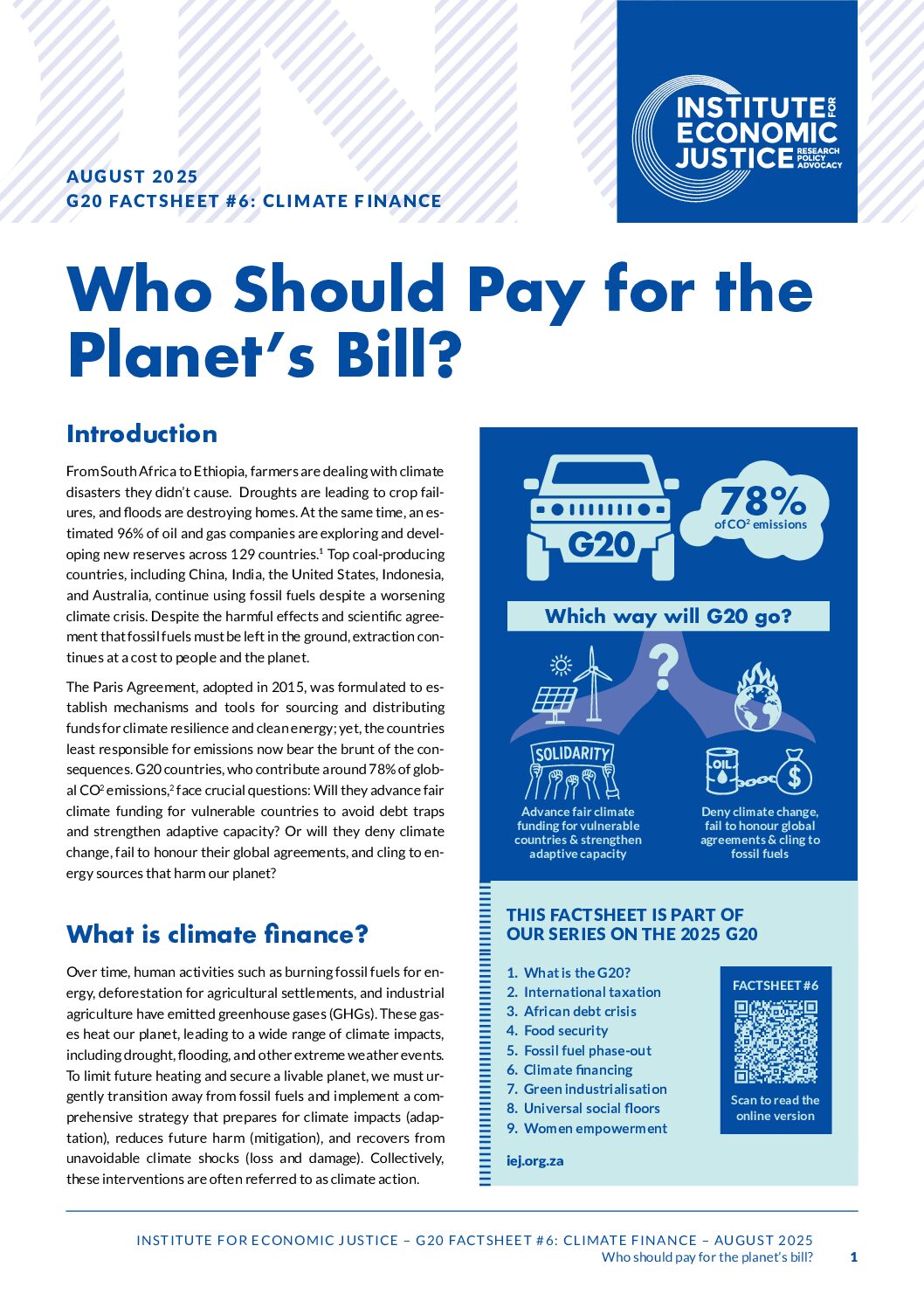Climate change is intensifying, causing droughts, floods, and other extreme events that harm lives and livelihoods, particularly in countries least responsible for global emissions. Yet, the resources to address the crisis remain inadequate. This factsheet, part of the IEJ’s 2025 G20 series, examines what climate finance is, why it matters, the role of the G20, and the risks in current approaches that can worsen inequality and debt.
What is climate finance?
Climate finance refers to the funding needed to mitigate the causes of climate change, adapt to its impacts, and address loss and damage caused by climate-related disasters. This funding can take the form of grants, loans, guarantees, green bonds, debt swaps, equity investments, carbon taxes, and carbon credit trading.
Developing countries require between $5 trillion and $6.9 trillion by 2030 to implement their national climate plans, yet existing commitments have fallen far short. In 2010, developed countries pledged $100 billion annually to support climate action in vulnerable countries by 2020 but failed to meet the target. In 2024, this pledge was increased to $300 billion, but significant gaps remain.
The debt trap in climate finance
Much of current climate finance comes in the form of loans rather than grants. This increases debt burdens in developing countries already struggling with high repayment costs. South Africa’s Just Energy Transition Plan, for example, is 96% loan-based and heavily dependent on private investment, which prioritises profit over equity. As a result, countries are forced to choose between servicing debt, investing in development, and taking climate action.
The G20’s role
The G20, responsible for around 78% of global CO2 emissions, has positioned itself as a leader in climate finance discussions. It has promoted tools such as blended finance, public-private partnerships, and the involvement of multilateral development banks to mobilise private capital. However, these approaches often shift risks onto the public while protecting private investors, locking countries into costly long term contracts and increasing debt vulnerability.
What is on the G20 agenda now?
South Africa has raised the issue of how developing countries can access climate finance without taking on more debt. Current discussions focus on mobilising larger-scale financing, increasing grants and concessional loans, lowering capital costs for developing countries, and expanding funding for renewable energy transitions. However, more scrutiny is needed of the G20’s reliance on de-risking strategies that privilege private profit over public welfare.
A call for fair climate finance
The IEJ advocates for climate finance that:
- Prioritises grants over loans to avoid deepening debt.
- Reflects the “polluter pays” principle and common but differentiated responsibilities.
- Ensures transparency in agreements and public oversight of funds.
- Strengthens community involvement and accountability in climate action.
Learn more
Explore the full findings and recommendations in the IEJ’s G20 Climate Finance Factsheet.
Other factsheets in the 2025 G20 series include:
- What is the G20?
- International taxation
- African debt crisis
- Food security
- Fossil fuel phase-out
- Green industrialisation
- Universal social floors
- Women empowerment

